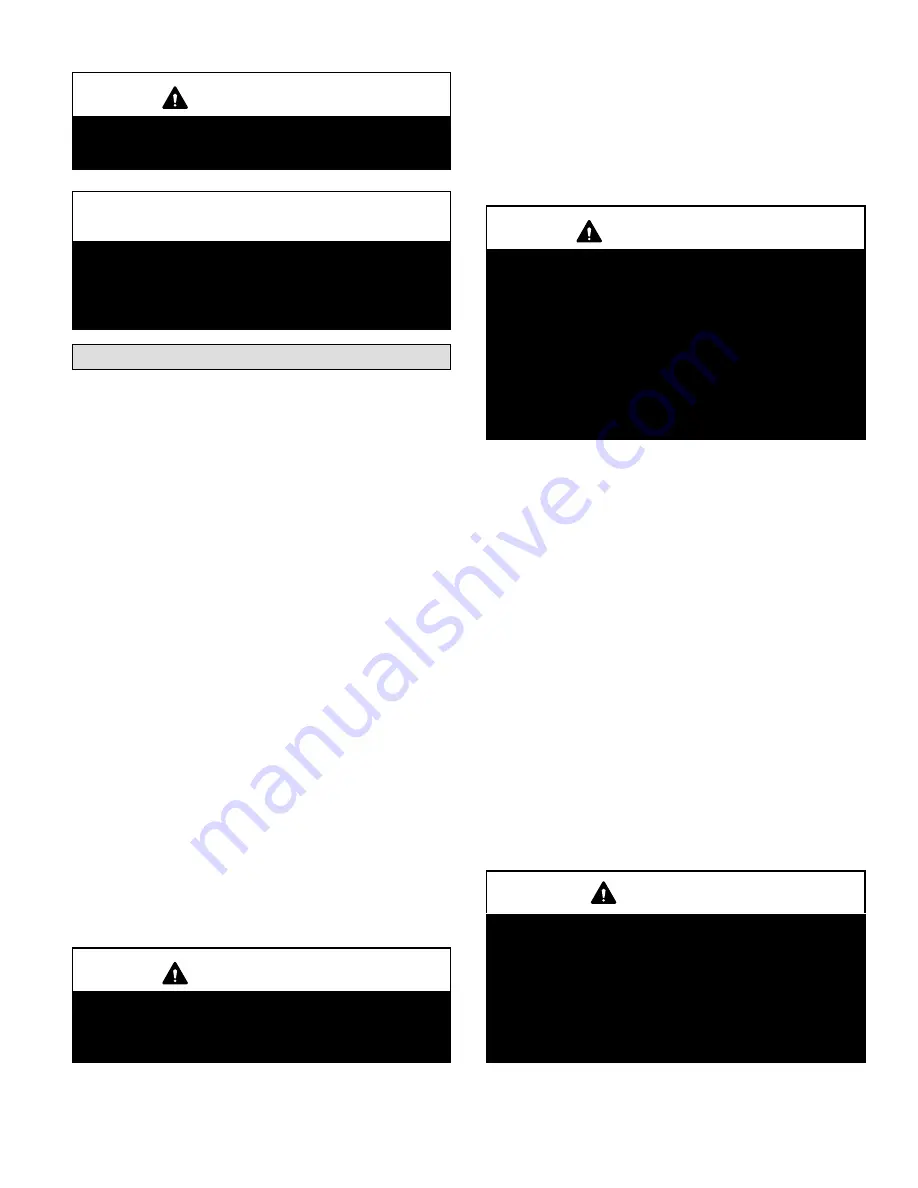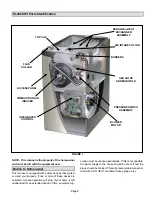
Page 3
CAUTION
Before attempting to perform any maintenance, turn
the electrical power to unit OFF at the disconnect
switch.
NOTICE
Any additions, changes, or conversions required in
order for the appliance to satisfactorily meet the ap
plication needs must be made by a licensed profes
sional installer (or equivalent) using factory-speci
fied and approved parts.
Safety Instructions
1 - Keep the furnace area clear and free of combustible
material, gasoline, and other flammable vapors and
liquids. If it is installed in an insulated area, the furnace
must be kept free of insulating material. Insulating ma
terial may be combustible.
2 - After any heavy snow, ice or frozen fog event, the fur
nace vent pipes may become restricted. Always check
the vent system and remove any snow or ice that may
be obstructing the plastic intake or exhaust pipes.
3 -
DO NOT
obstruct air flow to unit. Unit must receive an
unobstructed flow of combustion and ventilating air.
DO NOT block or obstruct air openings on the furnace
or air openings to the area in which the furnace is
installed. Take care to maintain established clear
ances surrounding the furnace.
4 -
DO NOT
store chlorine or fluorine products near unit
or introduce these products into the combustion air.
These products can cause furnace corrosion.
5 -
DO NOT draw return air from a room where this fur
nace, or any other gas appliance (ie., a water heat
er), is installed.
When return air is drawn from a room,
a negative pressure is created in the room. If a gas ap
pliance is operating in a room with negative pressure,
the flue products can be pulled back down the vent
pipe and into the room. This reverse flow of the flue
gas may result in incomplete combustion and the
formation of carbon monoxide gas. This toxic gas
might then be distributed throughout the house by the
furnace duct system.
WARNING
The blower door must be securely in place when the
blower and burners are operating. Gas fumes, which
could contain carbon monoxide, can be drawn into
the living space resulting in personal injury or death.
Your furnace is a gas appliance.
It is critical that the gas
supplied to the unit be completely burned to avoid the pro
duction of carbon monoxide gas. Complete combustion of
the gas requires, but is not limited to, correct gas pressure
and gas flow rate, adequate combustion, air, and proper
venting.
WARNING
Asphyxiation Hazard
Carbon monoxide gas is invisible, odorless and tox
ic.
The exhaust vent for this furnace must be leak-free
and must be securely connected to the furnace flue
collar at all times.
For your safety and to fulfill the terms of the limited
warranty, a licensed professional service technician
(or equivalent) must annually inspect this furnace
and its vent system.
Exposure to carbon monoxide gas can cause personal
injury and even death to all occupants, including pets. Any
item that is powered by or gives off heat from a combustion
process (including lawn mowers, automobiles, and fire
places) has the potential to produce carbon monoxide gas.
Because of this,
Lennox recommends the use of a car
bon monoxide detector in your home, even if you do
not own gas appliances.
Reliable detectors are available
at reasonable retail prices. Contact your Lennox dealer for
more details about this investment in your safety.
Your furnace is designed to meet standards set by national
agencies, and to operate safely when properly installed
and maintained. However, the unit's performance can be
greatly impacted by the individual installation and the op
erating environment. It is your responsibility to ensure that
this appliance is maintained. Proper maintenance is critical
for your safety and the satisfactory operation of the prod
uct.
Lennox strongly recommends annual inspection
and maintenance of this appliance.
Contact your Len
nox dealer for an inspection by a licensed professional ser
vice technician (or equivalent).
DANGER
Danger of explosion.
There are circumstances in which odorant used with
LP/propane gas can lose its scent. In case of a leak,
LP/propane gas will settle close to the floor and may
be difficult to smell. An LP/propane leak detector
should be installed in all LP applications.
Do not attempt to bleed the gas lines of air. Call your
local gas provider.

























